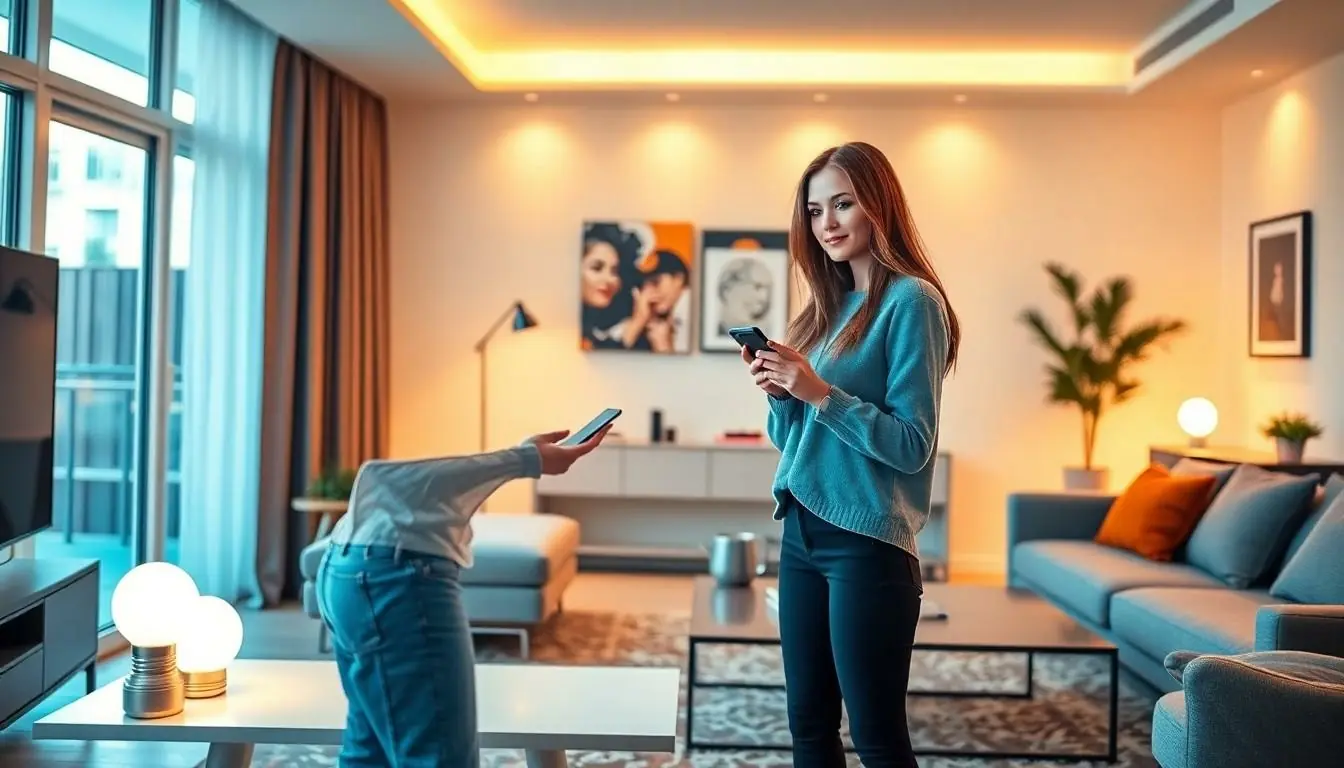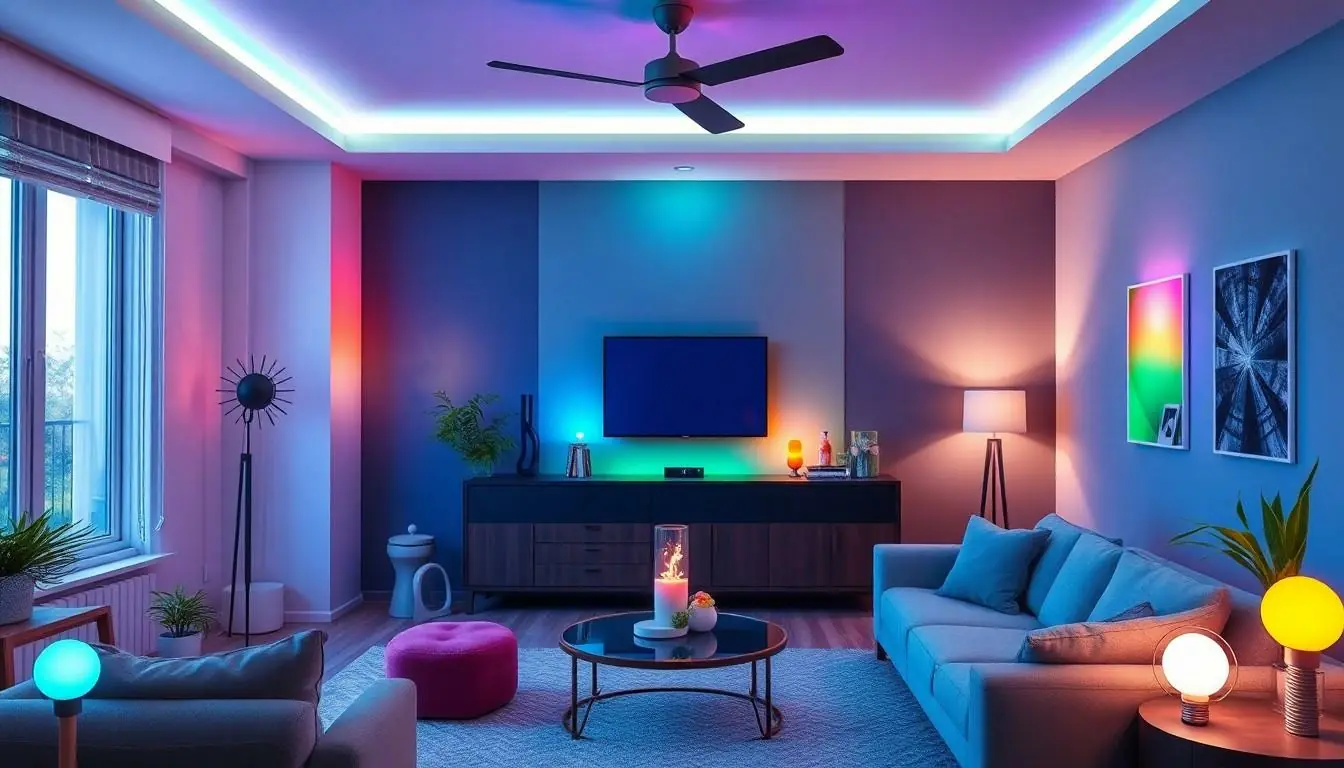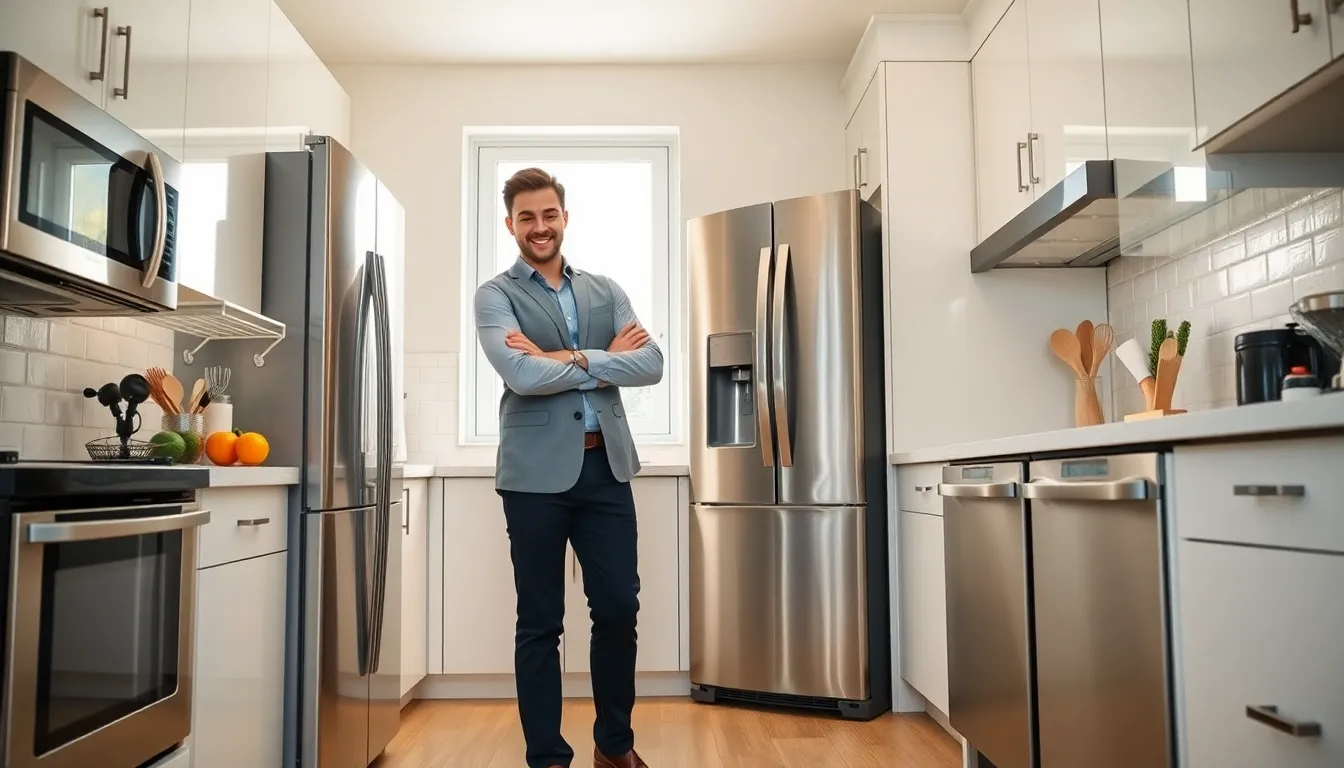Imagine walking into your home and having the lights greet you like an old friend. With home automation lighting control, that dream becomes a reality. No more fumbling for switches or arguing over who left the lights on. Instead, it’s all about convenience and a touch of magic at your fingertips.
Home automation isn’t just about fancy gadgets; it’s about transforming everyday life into an effortless experience. Picture this: you’re cozied up on the couch, binge-watching your favorite show, and with a simple voice command, the lights dim to the perfect ambiance. It’s like having your own personal lighting assistant, minus the awkward small talk.
Whether you’re looking to save energy or just impress your friends, smart lighting can brighten your world—literally! Get ready to explore how home automation can illuminate your life in ways you never thought possible.
Table of Contents
ToggleOverview Of Home Automation Lighting Control
Home automation lighting control streamlines everyday life by integrating lighting systems with smart technology. This integration allows for effortless management of lighting through various devices.
Definition and Importance
Home automation lighting control refers to the use of technology to manage lighting systems automatically or remotely. Such control systems enhance energy efficiency by reducing unnecessary power consumption. Smart lighting also contributes to improved security, as users can schedule lights to simulate presence when away. This technology adds a sense of luxury and comfort to residential environments, creating customized experiences for different activities such as reading, entertaining, or relaxation.
How It Works
This system relies on various components including smart bulbs, switches, and hubs. Users typically control their systems via apps, voice assistants, or sensors. Lights can adjust based on user preferences or factors such as time of day. For instance, smart lighting systems can detect occupancy and dim lights when a room is unoccupied. Integration with other smart devices enhances overall home automation, allowing for coordinated responses to user commands. Overall, this flexibility allows users to create perfect ambiances effortlessly.
Types Of Home Automation Lighting Control
Home automation lighting control encompasses various technologies. These options cater to differing preferences and needs.
Smart Bulbs
Smart bulbs provide direct control over lighting. Users can adjust brightness and color through apps or voice commands. Integration with home networks enhances customization. These bulbs consume less energy than traditional options, making them environmentally friendly. Many models support scheduling and can simulate sunrise or sunset, improving sleep cycles. Compatibility with other smart devices ensures seamless operation.
Smart Switches
Smart switches offer a sleek solution for controlling lights. Unlike smart bulbs, they enable regular bulbs to connect to smart systems. Through smartphone apps, users can monitor and adjust settings remotely. Some models incorporate motion sensors, turning lights on or off based on presence. Compatibility with voice assistants provides added convenience. Smart switches also support energy monitoring, allowing users to track consumption and optimize efficiency easily.
Integrated Systems
Integrated systems link multiple lighting controls into a cohesive network. This approach allows for centralized management through a single app or hub. Users can program scenes that adjust lighting across different rooms simultaneously. Built-in timers enhance automation, ensuring lights turn on or off at desired times. Integration with security systems further enhances safety, as lights can mimic occupancy when users are away. Flexibility in design supports various home configurations and preferences.
Benefits Of Home Automation Lighting Control
Home automation lighting control offers numerous advantages, enhancing both daily living and security in residential settings. It provides a range of practical benefits that improve overall efficiency in the home.
Energy Efficiency
Energy efficiency stands out as a primary benefit of home automation lighting control. Smart lighting solutions typically use LED technology, which consumes significantly less energy than traditional bulbs. Users can automate schedules to turn lights off during the day or dim them when natural light is sufficient. According to a study from the U.S. Department of Energy, LED lighting can reduce energy usage by up to 75%. This reduction in energy consumption translates not only to lower electricity bills but also to a decreased environmental impact.
Enhanced Security
Enhanced security remains a critical aspect of home automation lighting control. Systems can simulate occupancy by scheduling lights to turn on and off at different times, deterring potential intruders. Motion sensor lights automatically activate when someone approaches, providing both illumination and reassurance. Furthermore, smart lighting can integrate with security alerts, flashing lights to indicate a security breach. Statistics show that homes with automated lighting are less likely to be targeted by burglars, enhancing overall home safety.
Convenience and Customization
Convenience and customization truly revolutionize how individuals manage their home lighting. Smart lighting systems allow users to adjust brightness and color via smartphone apps or voice commands. This level of control simplifies tasks like creating the perfect atmosphere for movie nights or setting gentle lighting for a relaxing evening. Automation features enable lights to respond to daily routines, seamlessly switching on the moment someone enters a room. Additionally, programming settings for different activities lends a personal touch while maximizing comfort in living spaces.
Key Features To Look For
Home automation lighting control systems offer several key features that enhance usability and functionality. Evaluating these features ensures the right choice for a smart home.
Compatibility With Smart Home Devices
Compatibility with smart home devices remains crucial. Users benefit from systems that work seamlessly with various platforms like Amazon Alexa, Google Assistant, or Apple HomeKit. Flexibility allows for easy integration with existing devices, enhancing overall convenience. Additionally, look for systems supporting popular protocols like Zigbee or Z-Wave, as these frequently enhance interoperability amongst devices. Consumers appreciate the simplicity of controlling multiple devices using a single app.
User-Friendly Interfaces
User-friendly interfaces make a significant difference in the experience. Intuitive apps simplify the setup process and day-to-day operation of lighting controls. Consider systems that offer straightforward navigation, allowing users to set up schedules or adjust settings quickly. Visual controls, like drag-and-drop functions or clear icons, enhance accessibility and minimize confusion. Furthermore, responsive design across devices, including smartphones and tablets, ensures consistency in user experience.
Remote Access and Control
Remote access and control offer unparalleled convenience. Users gain the ability to manage lighting from anywhere using mobile apps, ensuring peace of mind when away from home. Automated schedules allow lights to operate on a set timetable, even when users aren’t present. Moreover, some systems send notifications for security alerts, notifying users of unusual activity. This feature enhances safety while enabling users to adapt their home’s ambiance to their preferences in real-time.
Conclusion
Home automation lighting control is revolutionizing the way people interact with their living spaces. By embracing this technology, individuals can enjoy unparalleled convenience and energy savings while enhancing their home’s ambiance. The ability to customize lighting through smart systems not only elevates everyday experiences but also contributes to improved security.
As smart home technology continues to evolve, the options for lighting control will only expand. Whether it’s through voice commands or intuitive apps, the future of home lighting is bright and user-friendly. With the right system in place, anyone can transform their home into a more efficient and enjoyable environment.




